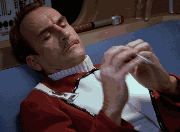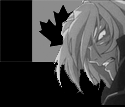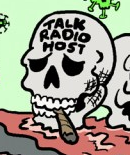|
Gotta say I will enjoy this even more when it gets a bit warmer. Come on, Spring.
|
|
|
|

|
| # ? May 31, 2024 09:58 |
|
Yooper posted:The various clusters are also awesome. Double cluster is probably my favourite. I could stare at it for hours. Ring nebula is also a nice find although it's quite unspectacular it's a visual outlier compared most other nebulae you can view.
|
|
|
|
The Real Amethyst posted:Ring nebula is also a nice find although it's quite unspectacular  I may be biased having seen it through a thirty‐inch telescope.
|
|
|
The Real Amethyst posted:As for stars, double stars such as Albireo were neat to look at as it was such a striking red/blue colour. Albireo was one of the first things I looked at through my Heritage 130p and also one of the first things that made me actually say "wow" out loud when I first saw it. That being said most stars are boring as poo poo to look at. Only ones with particular brilliant color or interesting binaries/trinaries and color differences are interesting imo. Clusters are my personal fave.
|
|
|
|
|
I'd like to add that the rule about "forget about visually seeing color in Deep sky objects" is bunk. The Catseye nebula is vividly blue green regardless of the size of telescope you're using.
|
|
|
|
That is true. I was attempting to moderate expectations because it’s better to be pleasantly surprised than disappointed. I’ve had so many different reactions from the general public that I tend to downplay it than hype it up: some will think the fuzzy smudge is the coolest thing they’ve ever seen, the next person in line will shrug and ask “what’s the big deal”. Looking through a telescope is naturally different from anything you can achieve with astrophotography or a press release of some particularly spectacular Hubble data, and while planetary nebulae (the Cat’s Eye is an excellent example of such) are definitely more colorful, the rule is generally that color is difficult to perceive in deep-sky objects. The first time I discovered that the Orion Nebula is bright green with a big mirror was certainly a shock when I was naïvely expecting red, though.
|
|
|
|
The Real Amethyst posted:and planets are underwhelming through a scope. Who was saying that? Phanatic posted:Gotta say I will enjoy this even more when it gets a bit warmer. Come on, Spring. Sadly as it gets warmer, Orion drifts into the daylight.
|
|
|
|
Hasselblad posted:Sadly as it gets warmer, Orion drifts into the daylight. But I think I get the North America nebula in exchange.
|
|
|
|
I’m partial to the Leo Triplet.
|
|
|
|
Finally got out for the first time in months. I've been trying to find a chance to shoot the Rosette Nebula for ages. Only an hour of data before it went behind a tree. Still, it was nice to get out again.
|
|
|
Golden-i posted:Finally got out for the first time in months. I've been trying to find a chance to shoot the Rosette Nebula for ages. That's a solid Rosette, looks awesome! Nice details in the squigglies. What's your rig?
|
|
|
|
|
Yooper posted:That's a solid Rosette, looks awesome! Nice details in the squigglies. What's your rig? Thanks! The scope's a Skywatcher Esprit 80, camera ZWO ASI294MC-Pro, mount Skywatcher EQ6-R. Shot from a bortle 8 neighborhood, with lots of LED streetlights and car headlights around which cost a lot of the small details in this one, but I'm still happy with how it turned out.
|
|
|
|
Just pulled the trigger and ordered a Redcat 51, since I want to start doing some wider-field shots. Back ordered, of course - wish me luck on getting it sometime in the next few months.
|
|
|
|
Hello thread. Is there any reason a mirrorless camera wouldn't be suitable for hooking up to a telescope? I'm going to buy a decent camera for the first time in my life and mirrorless seems like the future so that's what I'm looking at. I sold my scopes in a move a few years ago so this is purely an academic question for now but I like observing and it might be fun to take some pictures. I know I can use a tracker and a telephoto, and I will probably do that first but it would be nice to have the option to do more.
|
|
|
|
Phanatic posted:Gotta say I will enjoy this even more when it gets a bit warmer. Come on, Spring. Wow what is this? EDIT: There is way more going on with Orion than I realized. Dick Trauma fucked around with this message at 01:23 on Mar 28, 2021 |
|
|
Dick Trauma posted:Wow what is this? M42, Orion Nebula - https://en.wikipedia.org/wiki/Orion_Nebula
|
|
|
|
|
colonel tom posted:Hello thread. Is there any reason a mirrorless camera wouldn't be suitable for hooking up to a telescope? A mirrorless should be fine and work about the same as a DSLR. Just like a DSLR you'll need the proper t-ring which should cost about $10, and some adapter bits. A mirrorless will require less back focus than a DSLR due to not having the mirror, which is good and easier to mount since some telescopes are limited. Also like a DSLR, look into how you'll control it, either through a remote clicker for simple stuff, or with a computer and USB. There are probably people using whatever camera you're considering with a telescope already, so you can search around to see if they had issues. At high magnification like you typically get with a telescope, you usually need an expensive robotic EQ mount, possibly with active computer guiding, not just a star tracker. You can get some really fun images of the moon or maybe planets without the expensive kit though.
|
|
|
|
Tell me a bit more about mounts. I feel like a full goto is cheating, but are you saying that a motorized mount with good alignment would only give you a few minutes of exposure without streaking?
|
|
|
Salt Fish posted:Tell me a bit more about mounts. I feel like a full goto is cheating, but are you saying that a motorized mount with good alignment would only give you a few minutes of exposure without streaking? It comes down to how well you can polar align your mount and your focal length. You also probably won't exceed a minute or two of exposure. My usual process with the star tracker was to use SharpCap to polar align then shoot my targets. It made things significantly easier than looking up through the alignment scope and hoping I was actually looking at Polaris. A shorter focal length is also easier to get on target, you're covering more of the sky. The other issue is unless you're modifying your camera, you wont get those rich nebula colors. Canon has a mirrorless model specifically for astrophotography, the Canon EOS Ra. As an example of the modifying, this image was taken by a guy an hour north of me using a ten year old modified Canon and a Rokinon 135mm lens.  I have the same camera (unmodified) and can't get nearly the detail he does.
|
|
|
|
|
There are altaz mounts that will track an object, but if you’re doing exposures of several seconds or more, you have to worry about field rotation.
|
|
|
|
Question about a possible new telescope: I have an Orion XT6, which has been great over the past few years, but I'd like to upgrade for better views (not AP) of DSOs. Goto / tracking aren't priorities, and I was thinking about a larger Dob, either a solid tube with a 10" aperture or a truss tube with a 12" aperture. I'd be using it in my back yard, so I don't have to worry about transportation, but in terms of cost and bulk, I'd still want to avoid anything over 12", I think. I'm at about Bortle 6, so I assume the improvement is going to be limited in any event, but I think I'd like to give it a try. Any thoughts on aperture, speed or brand?
|
|
|
|
Salt Fish posted:Tell me a bit more about mounts. I feel like a full goto is cheating, but are you saying that a motorized mount with good alignment would only give you a few minutes of exposure without streaking? A nice goto EQ mount (or maybe an alt-az with a wedge) is usually considered the minimum to do long exposures. By long exposures I really mean 1 second or more, though it depends on the focal length. With a 50 mm lens, you can get by with a star tracker, but with a heavy 600-1800 mm telescope it can be hard to avoid streaks even with a fancy mount (and you may need active guiding). You don't technically need the whole goto function to do photography -- you really just need good mechanical construction and a steady RA motor -- but any mount like that also has a goto handset these days. Theoretically it's possible to modify a manual EQ mount but that would be pretty advanced stuff for most people and still expensive. Historically back in the film days people even did hand-guiding by looking through a second telescope but that's... impressive. It's possible to use a goto alt-az mount as well, but you'll get field rotation on long exposures and the low end ones aren't really meant for photography. In addition to having a decent mount, you need a spot on polar alignment to do even 30 second exposures. People who are somewhat serious about this generally drive the mount and the camera(s) using a laptop (a raspberry pi can work too) and use software assistance to get the polar alignment right, plate solving to make sure their target is lined up properly, and a second camera to do autoguiding. Goto mount software (or just drift alignment) can help you get a good alignment though, and I was certainly able to get some nice photos with just the telescope, mount, and a DSLR without all the fancy stuff. The minimum mount that'll work with a small to medium size telescope is something like a Celestron AVX or various other options from Orion, iOptron etc. around $800, though some people swear you need to pay $1500-2000. There's practically no upper limit, you can spend as much as a car on imported Italian telescope mounts for your optically perfect telescope hand made by master opticians if you want. These mounts are also pretty heavy (even relatively portable ones like iOptron makes) and take a while to polar align correctly, so it can be a real chore to set them up. E: typo Tyrgle fucked around with this message at 20:22 on Mar 29, 2021 |
|
|
|
Nude Hoxha Cameo posted:Question about a possible new telescope: They're pretty much all identical as long as the specs are identical. If I was buying new and could pick any variant, I would go with Apertura. They have the best accessories, dual speed focuser and they don't overcharge for it. There are also the Zhumell ones. Those seem to be identical to Apertura. Leaf Lock fucked around with this message at 10:58 on Mar 29, 2021 |
|
|
|
Leaf Lock posted:They're pretty much all identical as long as the specs are identical. If I was buying new and could pick any variant, I would go with Apertura. They have the best accessories, dual speed focuser and they don't overcharge for it. There are also the Zhumell ones. Those seem to be identical to Apertura. Thank you! Leaning towards a fast 10". I'm thinking that with my skies, the difference in light gathering vs a 12" won't justify the offsetting price for a 12" truss (and while I don't move my scope very far, my sense is that 12" would be too big to manage comfortably with a solid tube). Plus, in terms of construction and setup, environmental light etc., it seems like the solid tube construction would be more straightforward. The Apertura looks good, and I'll probably do a bit of digging on the cloudy night classifieds before I decide on anything.
|
|
|
|
Good call. Solid tube 12" scopes are like schlepping around a goddamm water heater. 10" is cumbersome but manageable.
|
|
|
|
I have a solid twelve‐inch newt and don’t regret it. It’s not at a problem for me to move around. I strapped handles on either side of its centre of gravity and that makes it much less awkward. For me, it certainly beats spending more time on assembly, disassembly, and collimation, but your experience may vary. I did get a great deal on it, and that helped my decision.
|
|
|
First night at the new house. I think I went too far on my exposure time / gain. Galaxies are washed out and I just can't tease the detail out.  But still, it looks pretty sweet. Going to try again tonight but Markarians Chain, one minute lights instead of 3 minute lights.
|
|
|
|
Finally, after a month of rain and clouds, I ran M81 again. My Astroberry setup took a dump so I am using a mini PC and RDP'ing into it. Much better workflow and not as flaky. I ran the brain in SharpCap which gave me a better idea on settings. Significantly lower sub time (30 seconds) and took 6 hours of subs. Had about 650 usable ones.    Was cool to see the baby little galaxies popping up around the image. I think there's more detail here but I need to work on my PI skills.
|
|
|
|
|
This thread needs new posts, and as I haven't gotten out in a little while, this is the last 2 pics I took. WO GT81 0.6x flattener, 294mc pro, l-enhance filter Rosette - 2021-02-05 - 60 300s exposures Really really pleased with the detail in this one.  Horsehead 2nd attempt - few nights in January - 260 300s exposures (really went overboard to see if I could get it as noise free as I possibly could) I think this version came out way better than my first, but it could've also been mostly in processing. 
|
|
|
simble posted:This thread needs new posts, and as I haven't gotten out in a little while, this is the last 2 pics I took. Man, those are both awesome. Really like the Rosette, both came out super clear. Question on your setup, how much are you dithering and how often?
|
|
|
|
|
Yooper posted:Man, those are both awesome. Really like the Rosette, both came out super clear. Thanks. I do what phd2 calls a “large” dither every 3 frames. I also have an auto focuser that I have run every hour or after a 10C temp change. The auto focuser was a huge QoL improvement and really took out a lot of the stress of a potentially wasted night due to lovely focus.
|
|
|
simble posted:Thanks. I do what phd2 calls a “large” dither every 3 frames. I also have an auto focuser that I have run every hour or after a 10C temp change. The auto focuser was a huge QoL improvement and really took out a lot of the stress of a potentially wasted night due to lovely focus. Auto focuser is next on the list for upgrades. Probably get the ZWO model, the Raptor one seems pricey.  That's my PHD2 dither settings, I don't see anything for large. Maybe we have different versions? I've got APT sending a 4 pixel dither and scaling it by 6 in PHD2, which should get me well clear of the noise I was seeing. Just need a clear night to test it.
|
|
|
|
|
I went with the pegasus focuscube v2. Solid and accurate little unit once you have it dialed in. I think the zwo is similar in most ways. Now that you mention it, the large dither setting is an SGP setting. I assumed it translated to something in phd2 because it always waits for the guiding to settle and phd2 records a dither on the graph. I suppose that could just be an API thing to throw a mark up. I think the important thing with dithering is that it just has to be big enough. The only thing you’re sacrificing is like a 5-10px border on your final stacked image.
|
|
|
|
I would post, but I'm just doing visual astronomy so far. Need to find a darker place nearby to do it. The backyard is terrible. If you go in Stellarium and mess with the light pollution options, I'd say it's between 5 and 6. I live in the middle of a small town in the middle of nowhere, but that's not as beneficial as it might seem. Every piece of land outside town is someone's crop field. The town over has a reservoir just outside of town that looks promising, but I haven't scouted out if it has lights on around it all night. It's just cloudy and windy and rainy right now. The bugs will be here soon.
|
|
|
|
Leaf Lock posted:I would post, but I'm just doing visual astronomy so far. Need to find a darker place nearby to do it. The backyard is terrible. If you go in Stellarium and mess with the light pollution options, I'd say it's between 5 and 6. I live in the middle of a small town in the middle of nowhere, but that's not as beneficial as it might seem. Every piece of land outside town is someone's crop field. The town over has a reservoir just outside of town that looks promising, but I haven't scouted out if it has lights on around it all night. It's just cloudy and windy and rainy right now. The bugs will be here soon. This might help you track down a good observing site. https://www.lightpollutionmap.info/#zoom=4.00&lat=45.8720&lon=14.5470&layers=B0FFFFFFTFFFFFFFFFF
|
|
|
simble posted:I went with the pegasus focuscube v2. Solid and accurate little unit once you have it dialed in. I think the zwo is similar in most ways. Excellent! I see one in my future. I just spent an hour trying to focus on my phone while RDP kept locking up. I had a brief window to test things out and it looks like that window just closed on me. If anything the anticipation of a "good" night is almost as exciting as an actual good night.
|
|
|
|
|
simble posted:I went with the pegasus focuscube v2. Solid and accurate little unit once you have it dialed in. I think the zwo is similar in most ways. I like Pegasus stuff, I have a focuscube and two pocket powerboxes. Good kit.
|
|
|
hannibal posted:I like Pegasus stuff, I have a focuscube and two pocket powerboxes. Good kit. Tell me more about those powerboxes. My setup is growing and starting to look shaggy. If I add the autofocuser it's going to drive me nuts trying to keep it all untangled.
|
|
|
|
Dithering success! M3, that's about 30 minutes of exposures at 30 seconds per. It stacked great, processed easy, and I hardly had to touch it.  I only got 1 hour on M101. Can't really seem to get the colors right. I stacked in both DSS and PI and it look funny in both. Maybe I just needed more integration time? Regardless the noise issues are much reduced. Thanks for the recommendation on that focuser, I've got one coming. With any luck it'll arrive before more clear weather. Next upgrade will be a power box. Be really nice to integrate the whole imaging train all on the mount.
|
|
|
|
|

|
| # ? May 31, 2024 09:58 |
|
Last night had more blue in the clear sky chart than I've seen in months. Made for a good night to set up my ghetto-rear end backyard tarp observatory. Did a lengthy messier and Caldwell tour until the moon came up. Good night. https://imgur.com/t/astronomy/Ecumzzz
|
|
|


























